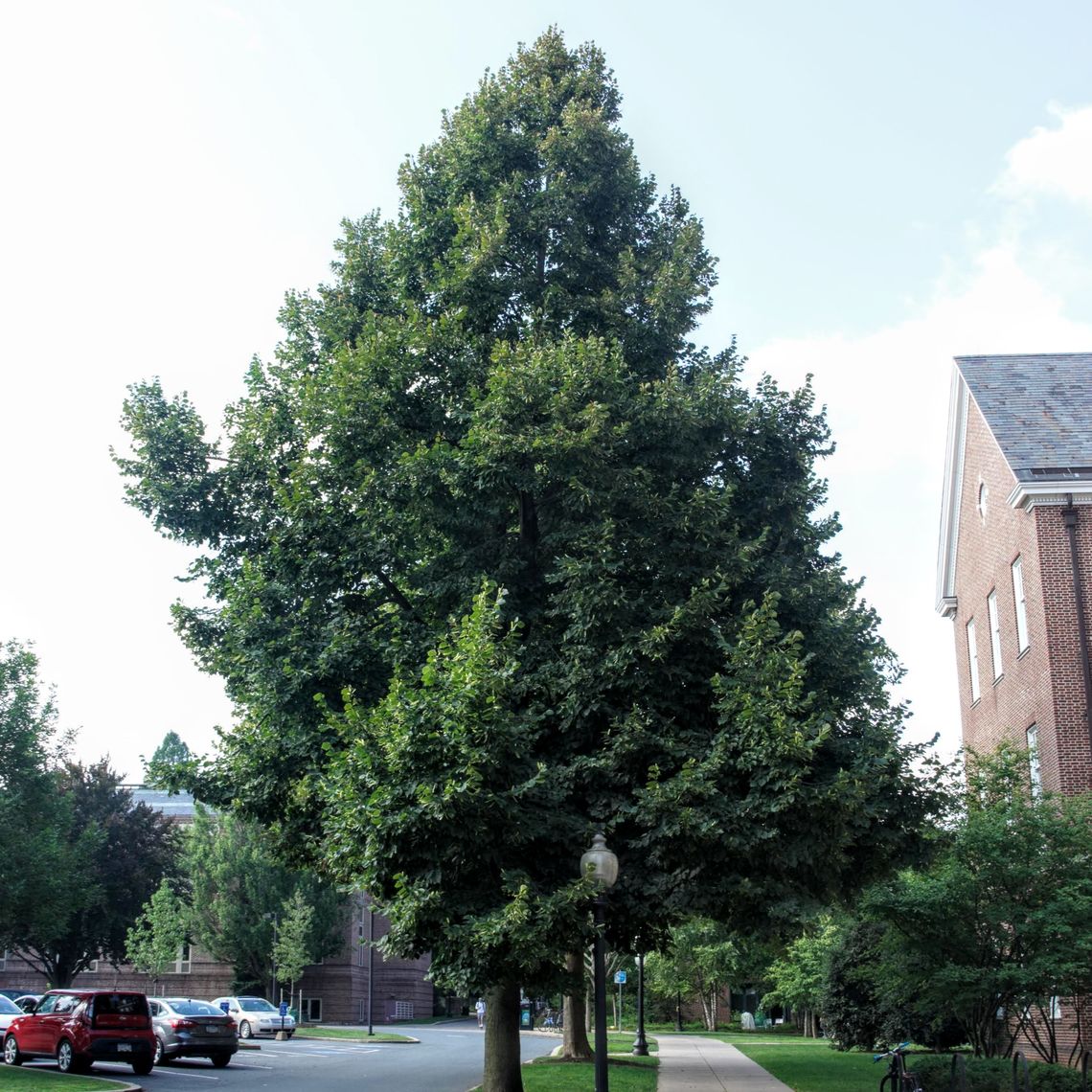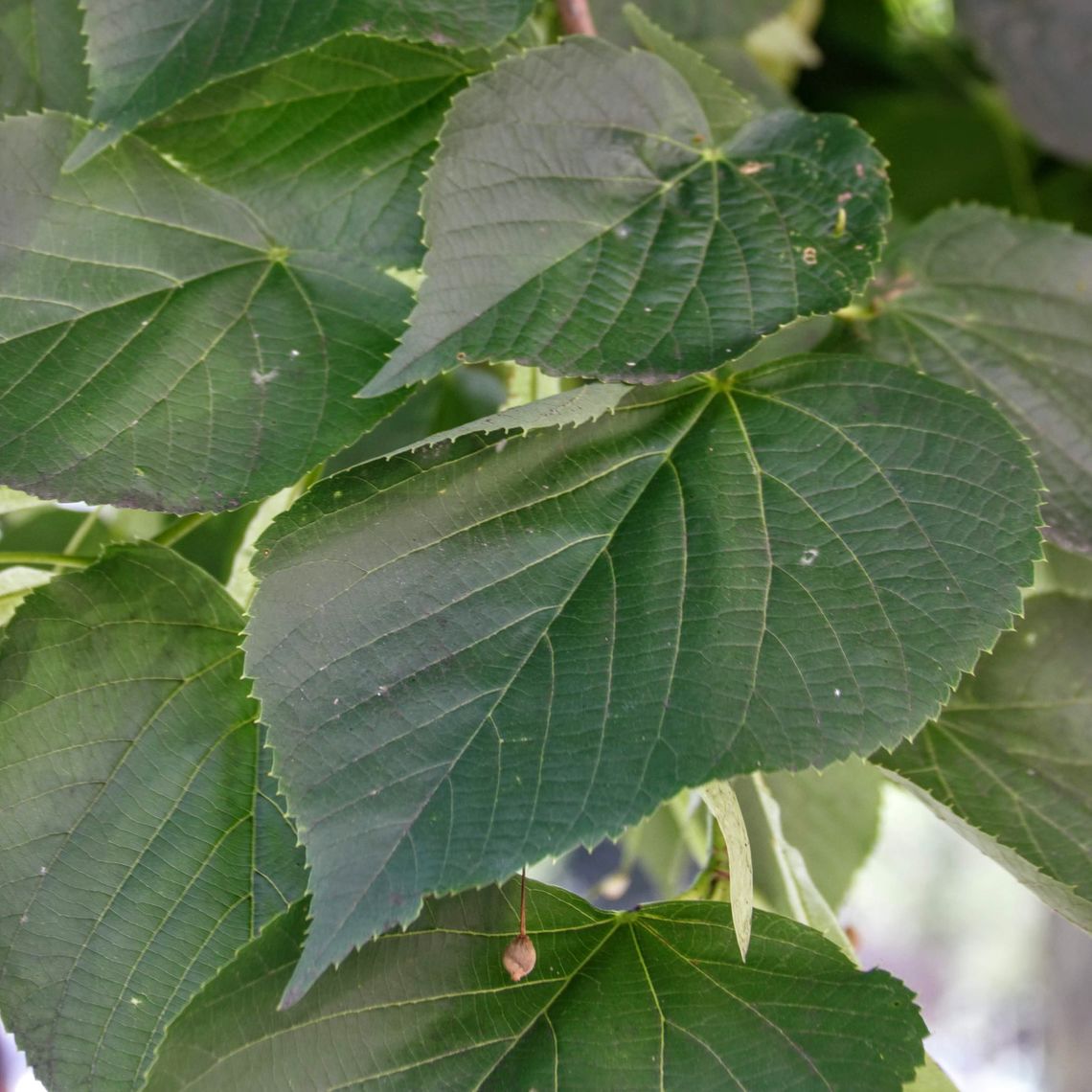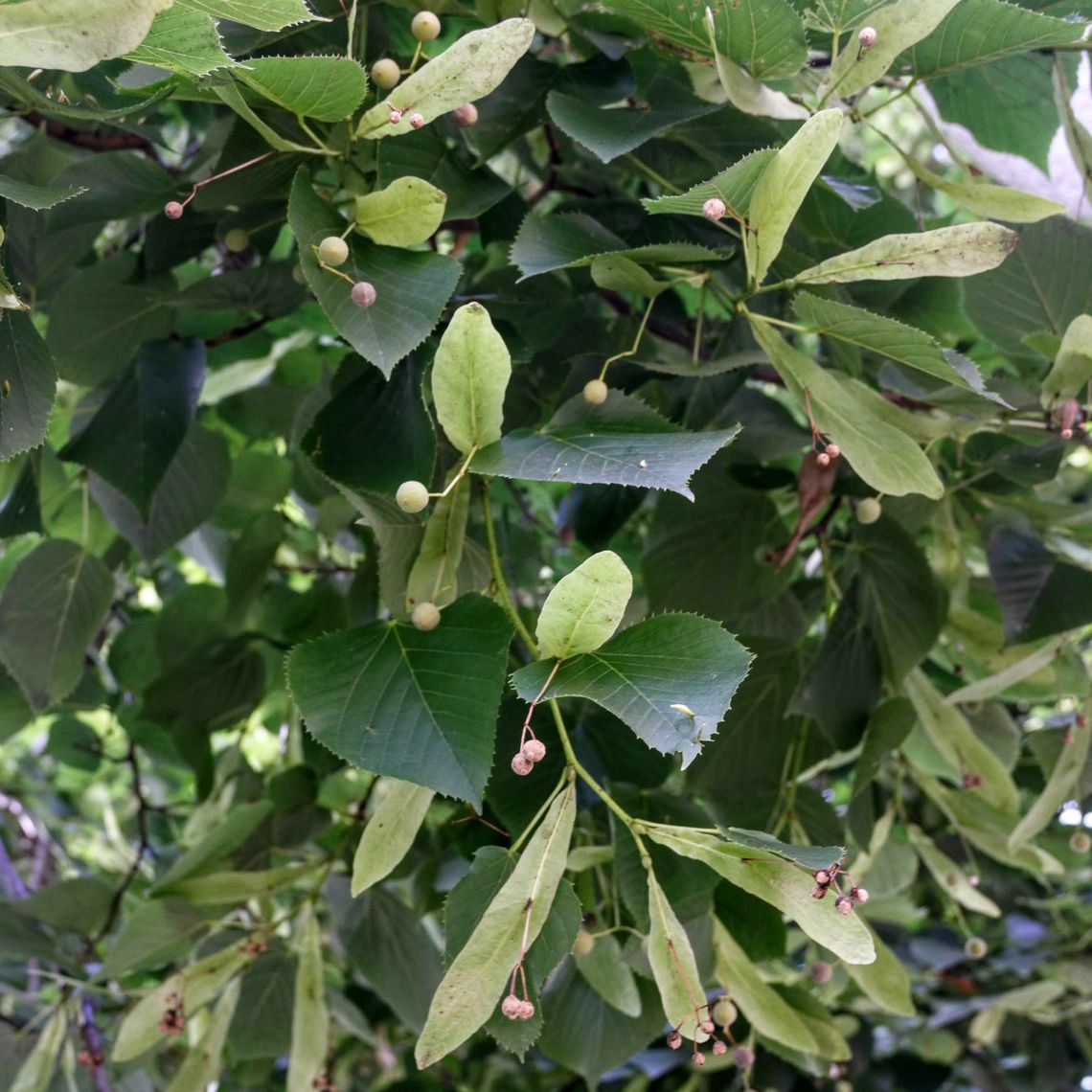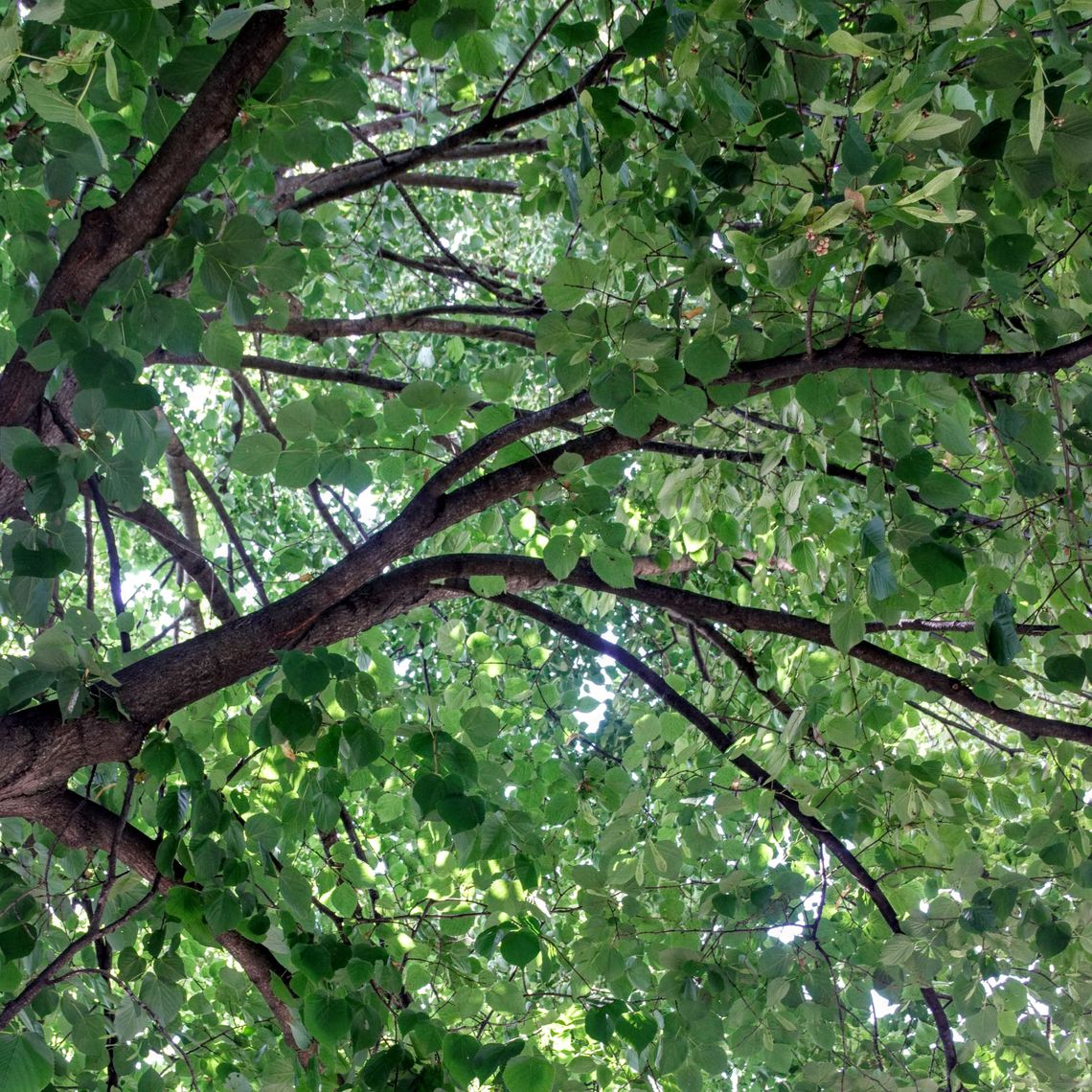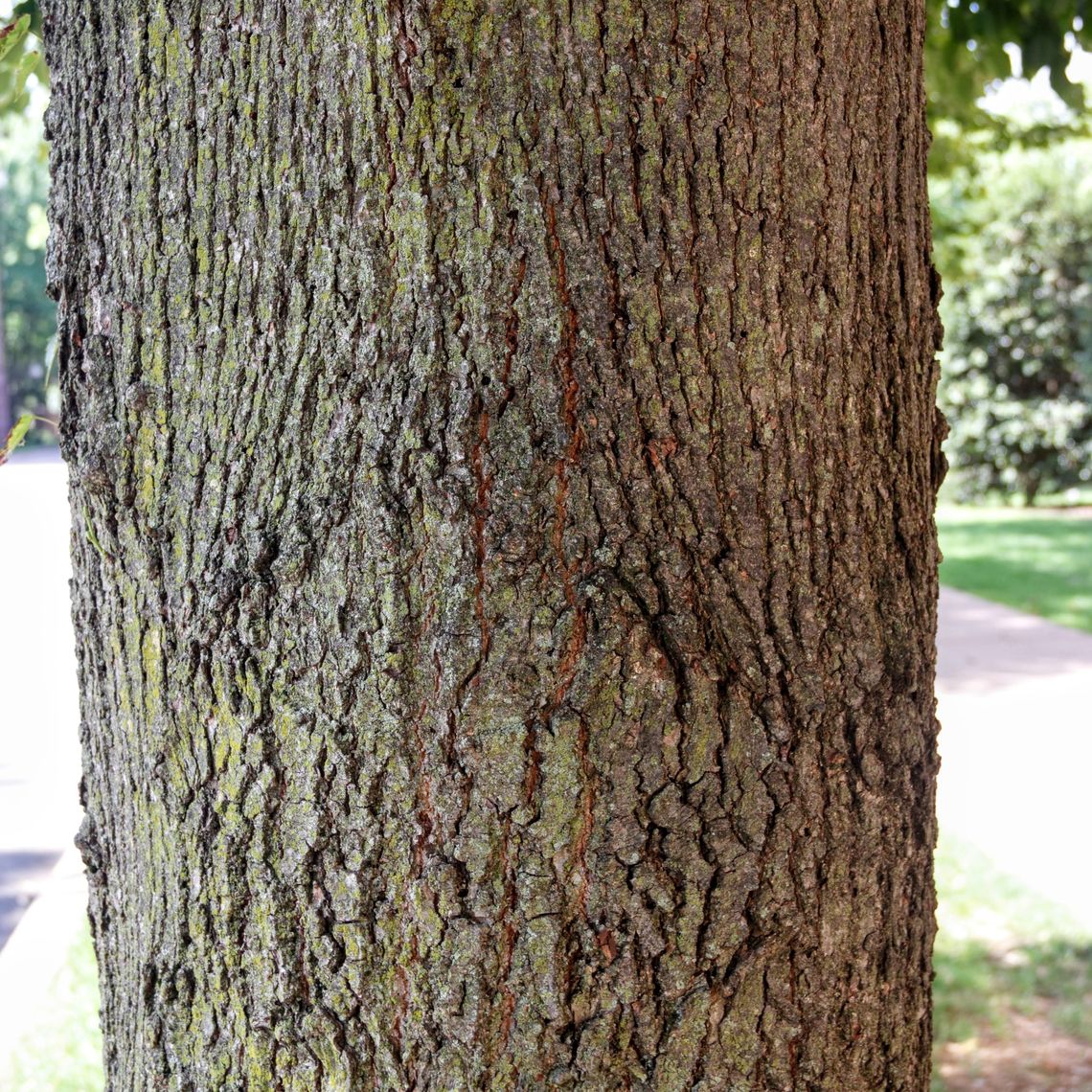Eastern Cottonwood (Populus deltoides)
The eastern cottonwood is a large tree that is often found along streams and rivers. Its leaves are triangular, dark green, and toothed. This tree's seeds have silk white hairs, giving them a cotton-like appearance. These seeds will often blow through the air and collect along curbs, roadside, or gutters. This tree attracts sapsuckers, songbirds, and mammals.
Family: Salicaceae (Willow)
Characteristics: The 3-inch to 5-inch-long leaves are triangular, toothed, and dark green. In the fall, leaves turn yellow. In early spring, before leaves emerge, small, non-showy, flowers that appear as catkins begin to bloom. Female flowers give way to seed capsules that split open when ripe, disbursing densely-tufted seeds that resemble cotton. Bark is ash-gray and divided into thick flattened ridges. This tree has an upright-spreading vase shape with a rounded top. It grows 75-100 feet high and 50-75 feet wide.
Foliage: Deciduous (leaves lost seasonally)
Geographic Origin: Eastern and central United States (native)
Cultivation Notes: Requires medium maintenance. Does best in full sun. Prefers medium to wet, well-drained soils. Twigs may begin to root and grow if stuck in the ground.
Number on Campus: 3
Sources: Dirr, Morton Arboretum, Missouri Botanical Garden

